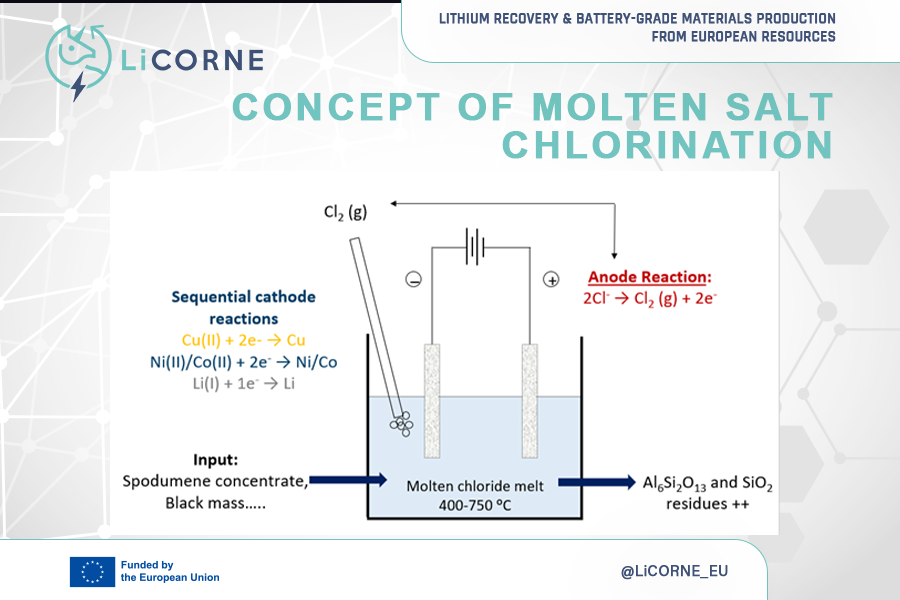
10/05/2024
Recovering lithium, cobalt, copper and nickel for a European battery supply chain
Meeting future demands for sustainable strategic metals recovery and domestic production
The European energy transition will be built on electrification, relying on clean technologies highly depending on metals, the majority being listed as critical and strategic raw materials. JRC’s Foresight Study, assessing supply chain dependencies and predicting materials demand until 2050, highlights EU’s need to diversity and secure a more resilient resourcing of needed metals. Additional recommendations refer to the necessity to explore Europe’s potential to build internal capacities for mining, refining and processing materials needed for battery production.
In the coming years, demand for lithium-ion batteries (LIBs) will be driven by the automotive sector, complemented by the demand for energy storage systems (ESS) storage requested by the deployment of renewables. Compared to the current supply of materials, major increases are foreseen for graphite (45% in 2030 and 85% in 2050) and lithium (Li) (100% in 2030, expected to reach 170% in 2050). In 2030, the cobalt (Co) demand for batteries will represent almost 60% of the current world supply, expecting to decrease to 40% in 2050, partly due to the shift towards more nickel-rich batteries [source: Foresight Study, JRC].
In the current scenario, overshadowed by geopolitical instability and reliance on powerful nations for critical minerals, the recently adopted Critical Raw Materials Act (CRMA) underpins, among other solutions, the need to turn towards domestically sourced recycled metal, which will help reduce reliance on imports or single sources. With clear objectives to strengthen EU’s capacities along the entire value chain, the CRMA additionally sets a threshold for the EU’s processing capacity, which should cover by 2030 at least 40% of the domestic annual consumption of strategic materials.
SINTEF researchers exploring molten salt chlorination for metal recovery
Researchers from SINTEF have been studying the possibility of recovering Li, nickel (Ni) and Co from secondary raw materials such as black mass, as well as Li from primary resources – spodumene concentrate. The team at SINTEF approached the task by converting the metals in raw materials using molten salt chlorination, a process that could become an alternative to state-of-the-art (SoA) hydrometallurgy.
Researchers conducted experiments on three types of input materials: one spodumene concentrate and two different samples of black mass (BM), the first one of unknown battery chemistry and pre-treatment, while the second BM sample, recovered from an NMC material, had undergone pyrolysis pre-treatment.
The experiments allowed researchers to study the thermal expansion and melting behaviour of the spodumene concentrate, obtaining the highest Li yield (100 %) when chlorine gas is used in a mixture of calcium chloride, sodium chloride and potassium chloride at a temperature of 727 ⁰C . Experiments on black mass material showed the highest chlorination yields were obtained from uncalcined material (Li 64 %, Co and Ni 22-24 %, Cu 83% and Mn 49 %) in a mixture of lithium chloride and potassium chloride at at 470 ⁰C.
The results of this research was presented by SINTEF representatives at the Joint Symposium on Molten Salts in November 2023.
Discover the scientific publication
© visual: SINTEF